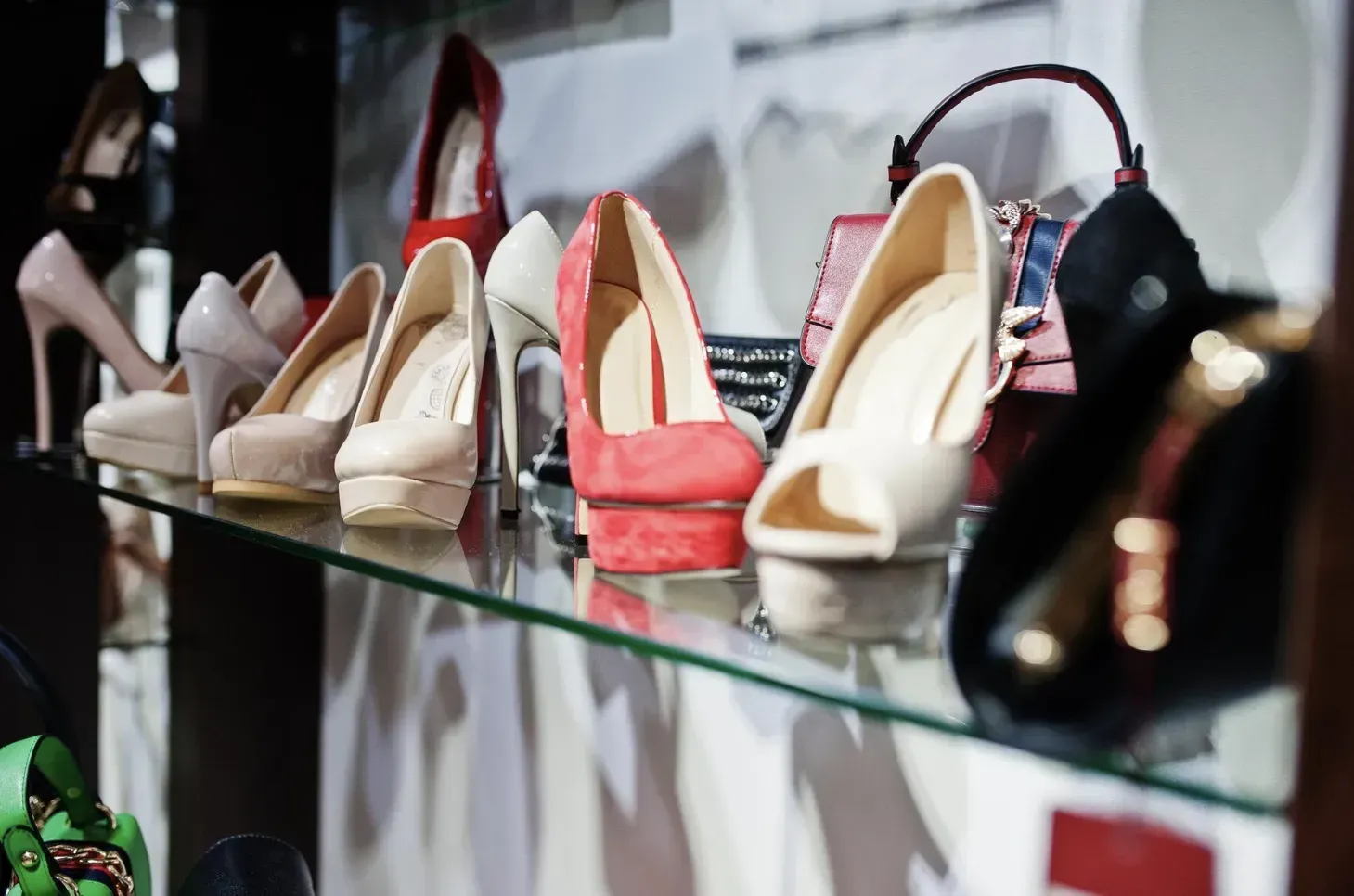Importing footwear from Colombia

The Government of Colombia has extended the 35% tariff on footwear imports until 2025. This measure aims to protect the national industry and support micro, small, and medium-sized enterprises (MSMEs) in the sector. In addition, there are trade agreements with other countries that exempt certain products from these tariffs, creating significant opportunities for the export of Colombian footwear, especially to markets such as Ecuador.
Regulations for Footwear Imports into Colombia
Decree 2632 of December 30, 2022
This decree establishes the regulations for importing footwear into Colombia, aiming to control the entry of foreign products into the national market. It focuses on key aspects related to tariffs and their application.
Objectives of the Decree
The main goal of Decree 2632 is to protect Colombia’s footwear industry, promoting its sustainable development and competitiveness. It also seeks to stimulate economic growth through the promotion of local production.
Tariff Coverage
The decree sets a 35% tariff on imported footwear exceeding a specific value threshold. This measure aims to prevent the massive entry of foreign products that could harm the national industry and ensure fair market conditions.
Tariffs and Their Application
Affected Products
The 35% tariff applies mainly to imported shoes that meet or exceed a certain value. This primarily affects imports of mid-range and high-end footwear, thereby protecting local manufacturers of similar products.
Exemptions and Current Trade Agreements
Certain products, especially those from countries with which Colombia has active trade agreements, are exempt from the tariff. These agreements aim to promote trade and facilitate the export of Colombian footwear to other markets.
Duration of the Measure
The tariff established by Decree 2632 is valid until December 31, 2025, providing stability and predictability for industry stakeholders and aiming to generate long-term benefits for the national sector.
Recommendations from the Triple A Committee
Reasons for Extending the Tariff
The Triple A Committee has recommended extending the tariff to strengthen domestic market conditions and promote the competitiveness of Colombia’s footwear industry, creating growth and development opportunities for the sector.
Impact on the National Industry
The tariff extension has had a positive impact on the national industry by encouraging local production and protecting Colombian footwear manufacturers, thus contributing to the sector’s growth and consolidation.
Impact of Tariffs on Colombia’s Footwear Industry
Footwear Sector Development
The 35% tariff provides strong support for the footwear sector, particularly for MSMEs, which play a vital role in the country’s economy.
Support for Micro, Small, and Medium Enterprises
Smaller companies benefit from tariff protection as it allows them to compete on equal terms with foreign imports. This offers stability and fosters sustainable growth over time.
Job Creation
Supporting local companies through tariffs not only boosts footwear production but also contributes to job creation in the sector, positively impacting the national economy.
Development of the Domestic Market
Economic Growth
The footwear import tariff contributes to national economic growth by encouraging local production and consumption of Colombian-made products. This strengthens the sector’s supply chain and boosts the country’s economic development.
Competitiveness and Product Quality
Tariff protection enhances the competitiveness of Colombia’s footwear industry by prioritizing the quality and added value of local products. This positions domestic footwear as an attractive option for both local and international consumers.
Opportunities for Exporting Colombian Footwear
Ecuadorian Market Potential
Exploring international markets is key to the growth of Colombia’s footwear sector. The Ecuadorian market, with its demand for variety and quality, presents one of the most promising opportunities.
Men’s Footwear Segment
The men’s footwear segment in Ecuador offers attractive opportunities for Colombian exporters. Ecuadorian consumers value fashion and quality, creating solid demand for casual and sports footwear.
Distribution Channels in Ecuador
To enter the Ecuadorian market effectively, it is important to understand the available distribution channels. These include department stores, wholesale importers, distributors, boutiques, and catalog sales, all of which can be used to reach Ecuadorian consumers.

Sector Strategy for Footwear Export
A well-structured export strategy is key to success in international markets such as Ecuador. Understanding export requirements and regulations, as well as actively promoting current trade agreements, can streamline market entry and increase business opportunities abroad.
Importance of Current Trade Agreements
Benefits and Exemptions
The reduction of tariffs is one of the main benefits offered by current trade agreements, which enhances the competitiveness of Colombian products abroad. These trade alliances also provide easier access to markets that might otherwise be restrictive.
Tariff Reductions
Lower tariffs make Colombian footwear more attractive in terms of price for foreign consumers, which can boost exports and strengthen the industry’s international presence.
Market Access Facilities
Thanks to current trade agreements, Colombian companies can enter international markets more easily and with fewer tariff barriers, facilitating the expansion of their operations abroad.
Countries with Trade Agreements
Main Trade Partners
Colombia has several strategic trade partners that have established mutually beneficial agreements. The main partners for footwear exports include the United States, Mexico, and certain European countries.
Opportunities and Challenges
While trade agreements create growth opportunities for Colombia’s footwear industry, they also present challenges in terms of competition and adapting to each market’s requirements, making a strong export strategy essential.
Role of the Ministry of Commerce in Regulation
Functions of the Ministry of Commerce, Industry, and Tourism
The Ministry plays a key role in regulating and promoting various productive sectors in Colombia. Its responsibilities include designing trade policies aimed at strengthening the competitiveness of national industries and fostering sustainable growth in the global market.
Statements by Minister Germán Umaña Mendoza
Justification for Extending the Tariff
Minister Umaña Mendoza has justified the extension of the footwear import tariff as a necessary measure to protect the domestic industry and support its development against foreign competition. This decision seeks to ensure the sustainability and growth of the industry, prioritizing job creation and strengthening the domestic market.
Future Vision for the Footwear Industry
The Minister has expressed a positive outlook for Colombia’s footwear industry, highlighting its growth potential and innovation capacity. With the support and regulatory policies implemented by the Ministry, the industry is expected to continue expanding and positioning itself as a quality benchmark in the international market.
Quality and Development Strategies and Policies
Innovation and Technology Initiatives
- Implementing advanced production technologies to ensure footwear quality and durability.
- Developing innovative materials that improve comfort and performance, aligned with market trends.
- Collaborating with research and development centers to apply new technologies in footwear design and manufacturing.
Business Training and Capacity Building
- Training programs for footwear manufacturers to enhance design, production, and business management skills.
- Promotion of best practices, including training on quality standards and sustainability.
- Incentives for companies to invest in staff training, fostering specialization and continuous improvement.
Sector Development Policies
Incentives and Financial Support
- Low-interest financing programs to promote innovation and modernization in footwear companies.
- Tax incentives for companies meeting quality and sustainability standards in footwear production.
- Government support through grants and preferential credit lines to encourage investment and growth in the footwear sector.
Strengthening Productive Chains
- Promoting strategic partnerships among all stakeholders in the footwear supply chain, from raw material suppliers to final distributors.
- Implementing quality and traceability certification programs to ensure the origin and quality of materials used in footwear manufacturing.
- Developing efficient logistics strategies to optimize production and distribution, reducing costs and delivery times.






